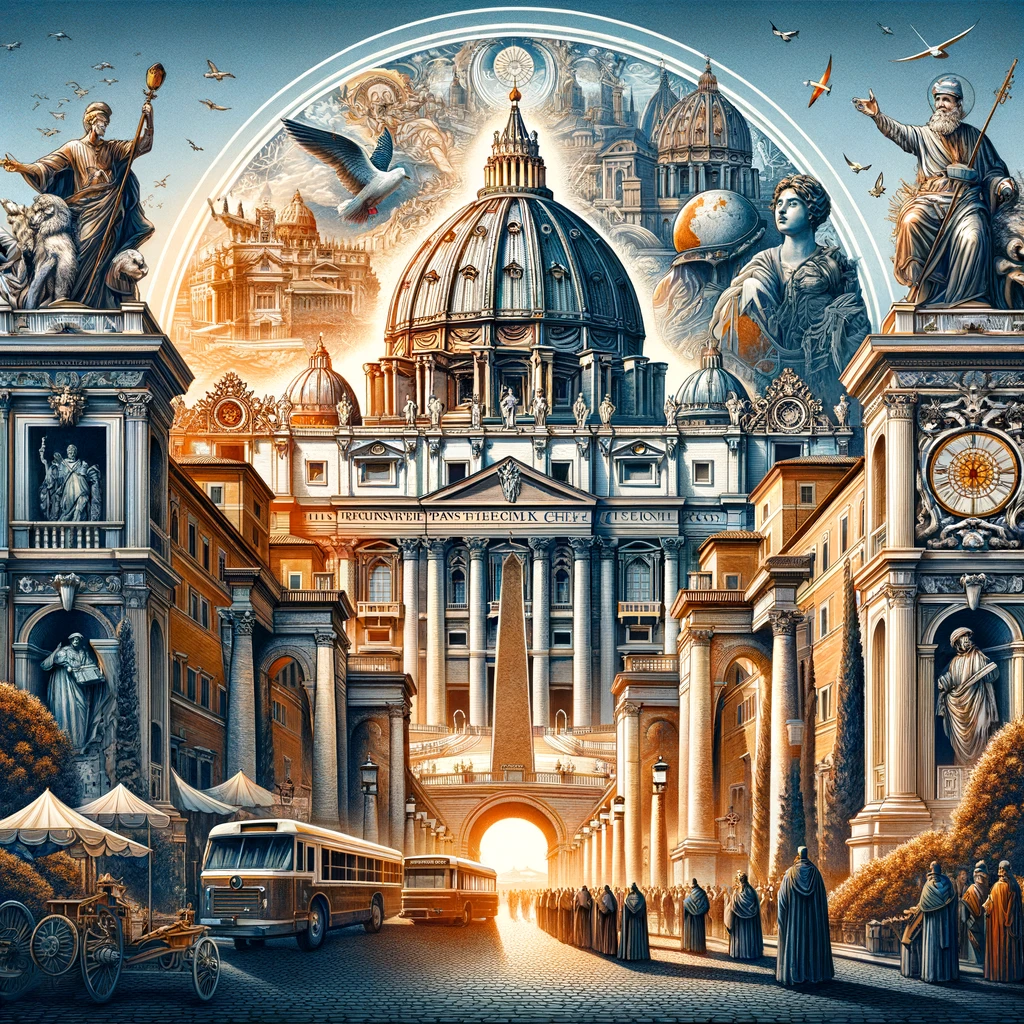Introduction
Vatican City, an independent city-state enclaved within Rome, Italy, is the smallest sovereign state in the world by both area and population. As the spiritual and administrative center of the Roman Catholic Church, it holds a unique place in global affairs, combining religious significance, rich cultural heritage, and architectural magnificence.
Historical and Religious Significance
Established as an independent state in 1929 through the Lateran Treaty between the Holy See and Italy, Vatican City is the seat of the Pope, the spiritual leader of the Roman Catholic Church. The history of this area, however, dates back much further, being closely intertwined with the history of the Church and Christianity itself.
Governance and Structure
Vatican City is a theocratic monarchy, with the Pope as its head of state. The governance of the city-state is managed by the Roman Curia, the administrative apparatus of the Holy See. Despite its small size, Vatican City has its own post office, bank, and broadcasting services, along with a well-equipped security force, the Swiss Guard.
Cultural and Architectural Heritage
The Vatican is renowned for its artistic and architectural masterpieces. The Vatican Museums house some of the world’s most famous art collections, including the works of Michelangelo, Raphael, and Leonardo da Vinci. The Sistine Chapel, with its iconic ceiling painted by Michelangelo, and St. Peter’s Basilica, one of the largest and most important churches in the world, are quintessential examples of Renaissance art and architecture.
The Vatican Gardens and Library
Apart from its historical buildings, the Vatican City also boasts the Vatican Gardens, a place of tranquility and beauty, and the Vatican Library, one of the oldest and richest in the world, containing an invaluable collection of texts, manuscripts, and incunabula.
Tourism and Pilgrimage
Vatican City is a major destination for religious pilgrims and tourists alike. Millions visit each year to witness its artistic treasures, attend Papal audiences, and experience its solemn religious ceremonies.
Challenges and the Future
Vatican City, while primarily a religious entity, also faces challenges common to sovereign states, including governance, diplomacy, and the management of global Catholic affairs. Its future seems to be one of balancing its immense religious responsibilities with the challenges of modernity and global change.
Conclusion
Vatican City is more than just a city or a religious enclave; it’s a symbol of faith and a testament to the enduring power of art and history. As the smallest sovereign state, it continues to wield an influence that far surpasses its physical boundaries, remaining a focal point of spirituality, culture, and history in the modern world.
- Area: Vatican City spans an area of about 44 hectares (110 acres), making it the smallest sovereign state in the world by area.
- Population: The population of Vatican City is around 800 people, which also makes it the smallest country in terms of population. This number includes the Pope, cardinals, clergy, Swiss Guards, and other staff.
- Location: It is an enclave within the city of Rome, Italy, meaning it is a country entirely surrounded by another country.
- Economy: The Vatican’s economy is supported by contributions from Roman Catholic dioceses worldwide (known as “Peter’s Pence”), the sale of postage stamps and tourist mementos, admission fees to museums, and publications.
- Languages: Italian is the most commonly spoken language in Vatican City. Latin is also used for official documents and liturgies.
- Governance: Vatican City is a theocratic elective monarchy, with the Pope serving as the head of state. The governance of the Vatican City is handled by the Holy See.
- Swiss Guard: The Swiss Guard, founded in 1506, is the personal guard of the Pope and has around 135 guardsmen. It is one of the oldest active military units in continuous operation.
- St. Peter’s Basilica: One of the largest churches in the world, St. Peter’s Basilica has a total area of 15,160 square meters (163,180 square feet) and can hold more than 60,000 people.
- Vatican Museums: The Vatican Museums, established by Pope Julius II in the early 16th century, house one of the most impressive art collections in the world, with over 70,000 works of which 20,000 are on public display.
- The Sistine Chapel: The Sistine Chapel, famous for Michelangelo’s ceiling and The Last Judgment, is a major artistic and religious landmark within Vatican City.
